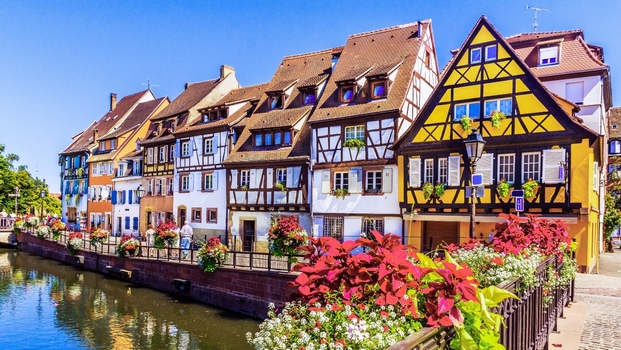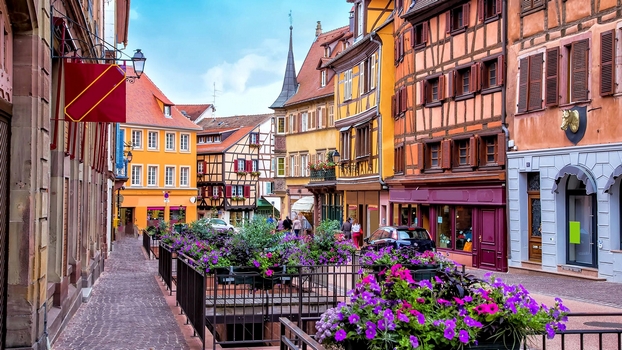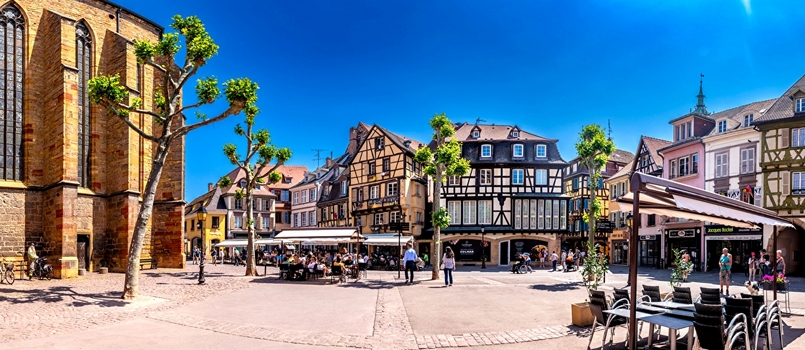| Jui's Swiss Trips |
|
Colmar (webpage wiki / weather forecast) |
||

|
||
|
Colmar is located on the Alsace Wine Route and likes to call itself the capital of Alsatian wines. The city is located about 70km north of Basel (about halfway to Strasbourg) and is reached from Basel SBB by direct train connections within 45 minutes. Colmar is famous for its well-preserved architectural heritage dating back six centuries and for its museums, including the Unterlinden Museum with the Isenheim Altarpiece. This picturesque city was founded in the 9th century. Mostly spared from the destructions of the French Revolution and the wars, the cityscape of the old-town is homogenous and renowned among tourists for its unique character. An area (which formerly served as the butcher's, tanner's and fishmonger's quarter) that is crossed by canals of the river Lauch is now called "little Venice". Colmar is home to numerous important medieval and Renaissance town houses that have preserved the character of the old town over the centuries. The city is also the birthplace of some famous artists. Colmar's secular and religious architectural landmarks reflect eight centuries of Germanic and French architecture and the adaptation of their respective stylistic language to the local customs and building materials (pink and yellow Vosges sandstone, timber framing). The many restaurants invite the visitor to taste some of the local Alsatian specialities and have a glass or two of the famous dry or sweet Alsatian white wines with the meal. There are also many shops which sell diffrent local products and souvenirs. If there is an interest in Basel, we might cut time in Colmar a bit, to get some time for a short visit of this city. Either mornings before Colmar or in the afternoon before returning home. |
||

|

|

|
| หน้าภาษาไทย |